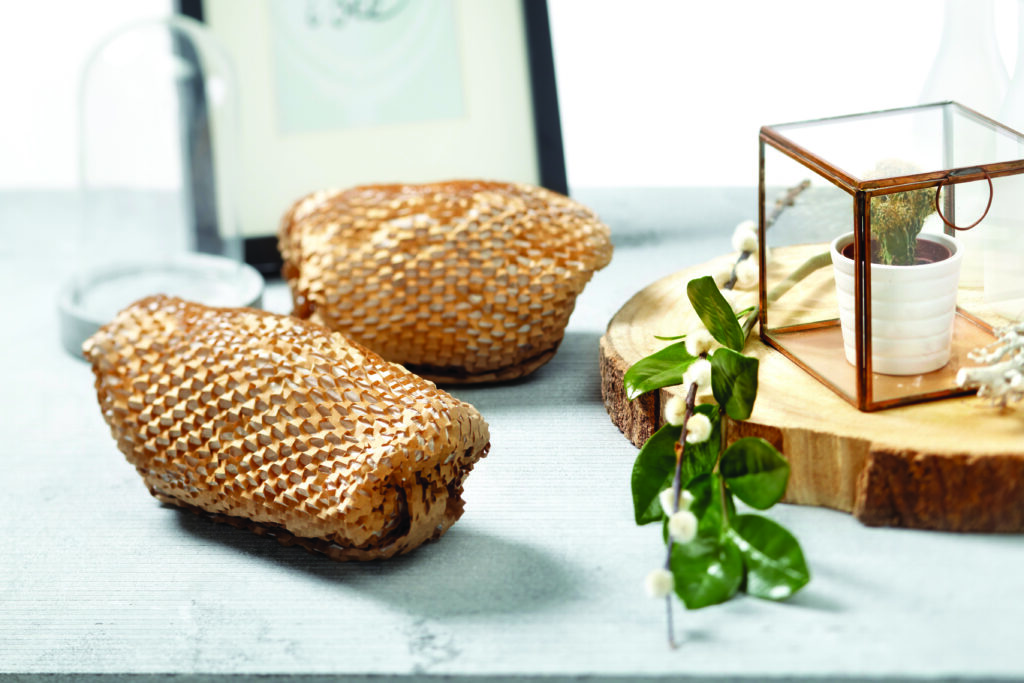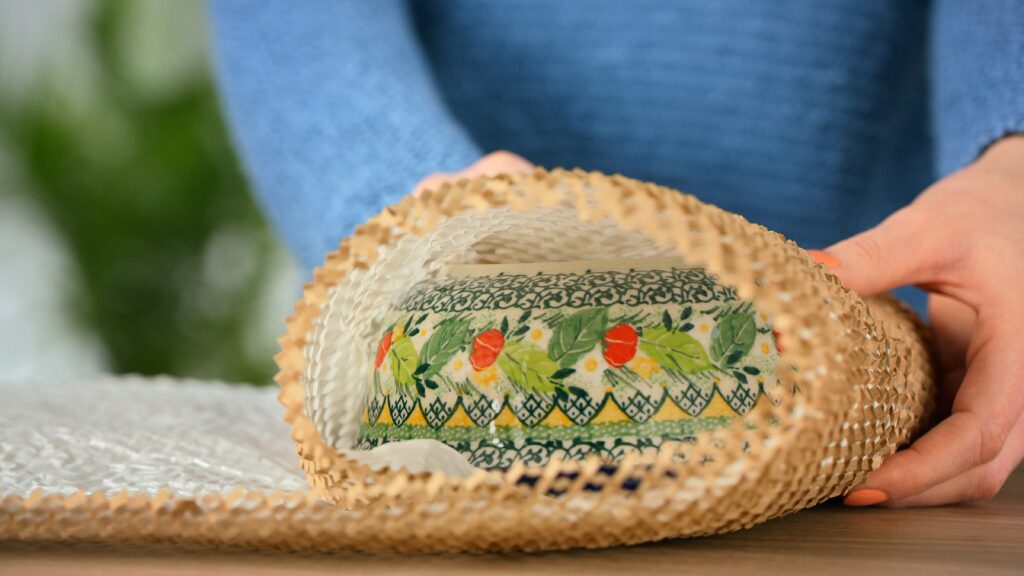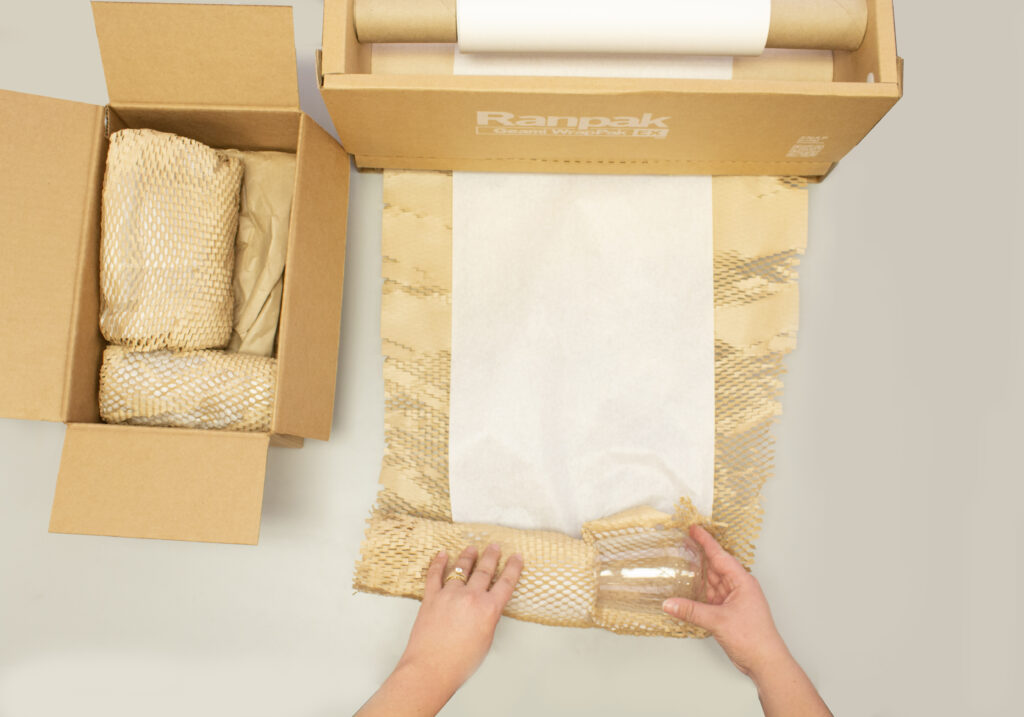Sustainable Packaging: Why Paper Wrapping Material is Replacing Plastic Bubbles
Blog Post
May 2, 2023
Blog Post
May 2, 2023
Whether wrapping items for a move to a new home or unboxing a brand-new purchase, it’s likely that consumers have encountered plastic bubbles in one form or another. Though they may be fun to pop, these plastic products have a real environmental cost that needs to be addressed. It’s time to take action to replace plastic bubbles as the potential for pollution grows along with global e-commerce.
Fortunately, more sustainable alternatives to plastic bubble roll are readily available for businesses and consumers. Geami paper provides the benefits of plastic bubbles with the additional benefit of being made of 100% recyclable and sustainable paper.
Wrapping serves several key packaging purposes.
What makes wrapping different from void fill is the degree of surface protection that it provides to goods. Packaging materials are used to securely cover the entire surface of a product.
Void fill is very good at securing products in place and helping to cushion against shocks. It makes sense to include wrapping materials when a product requires additional protection against surface damage such as scratching or chipping,
Fragile products are often higher-value products, which makes the protection that wrapping affords even more desirable.
Plastic bubble sheets are usually among the first products people think of when they consider how to wrap their valuables, but there are good reasons why it’s time to replace them with more sustainable paper.

MarketWatch predicts that the market for plastic bubble wrapping will grow annually by 4.8% CAGR from 2023 to 2030, fueled by expanded international trade and e-commerce.
Business growth does not have to be tied to single-use plastics. Unless we change course towards more sustainable paper packaging, we are risking a future where there is more plastic than fish in the ocean by as early as 2050.

Ironically, products that people value and want to protect can be harmed by the well-intentioned application of plastic bubbles. Antiques and artworks in particular can be damaged by prolonged contact with plastic bubbles, leaving behind an imprinted pattern.
The science behind this damage is due to the chemical composition of flexible plastics, which contain plasticizers. The plasticizers can act as a solvent when coming in contact with certain metals, paints, or varnishes leading to unsightly damage.
Geami offers the sustainability benefits of paper along with the protection of a bubble. It’s the ideal solution to replace plastic bubbles when shipping valuables.
Without the air pockets, plastic bubble rolls are just thin plastic sheets. Therefore, the bubbles are created during production and shipped as expanded rolls that can be unspooled as needed. While lightweight, the product occupies a fair amount of space because of its puffed-up expansion.
Storing and shipping with a low-profile is another area where Geami paper shines. Geami’s die-cut surface expands when extended. This means that it can be stored flat and then gain height on-demand without the need for any inflation. Thanks to its low-profile, one pallet of Geami can be the equivalent of up to 9.8 pallets of plastic air bubbles, both equivalent to the amount needed to cover 5,880 square meters.

Geami’s honeycomb structure is designed to wrap securely without the need for tape. It tears off the roll easily without extra scissors or cutting blades. Overall, it’s a safer and more ergonomic process than cutting a plastic bubble sheet and securing it with adhesives. It can also allow employees to wrap more products, up to three times faster that plastic bubbles with fewer roll changes and the ability to bundle items together.
It’s a mistake to assume that plastic bubbles will provide the highest level of protection for wrapping products. In fact, Geami paper was found to be up to 60% more protective when tested in common drop scenarios against plastic bubble wrapping by Ranpak’s packaging engineers.
Download our guide to learn more about market trends and how to make the switch to paper packaging
You are now leaving the Ranpak website. The website you will be entering is not owned or operated by Ranpak and/or its subsidiaries. The content, products and information contained on third party websites are not owned or controlled by Ranpak and/or any of its subsidiaries. Therefore, Ranpak makes no representations about, does not endorse or adopt, and is not responsible or liable for damages relating to the third party, its products or services, its website, its privacy policies or practices, or the content of the third party website.